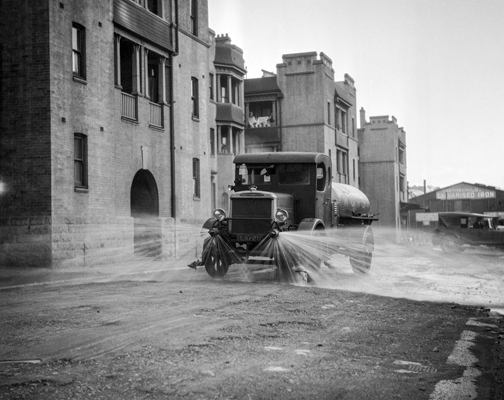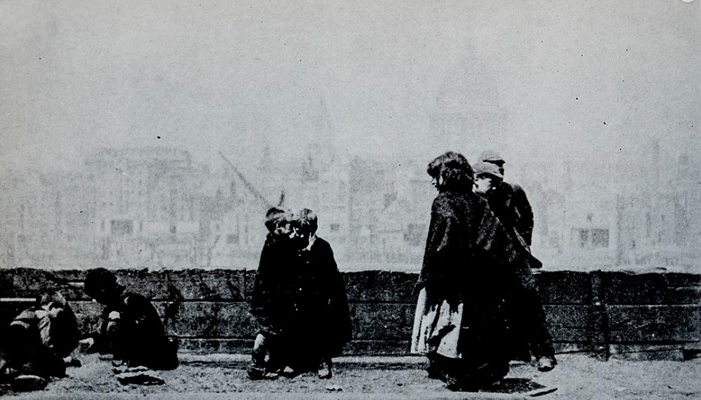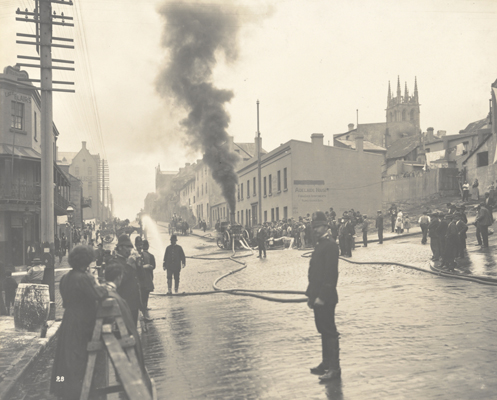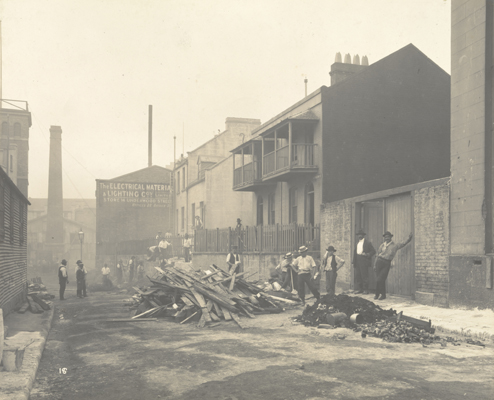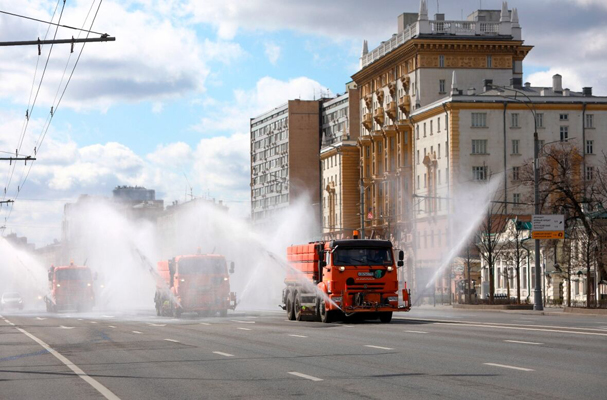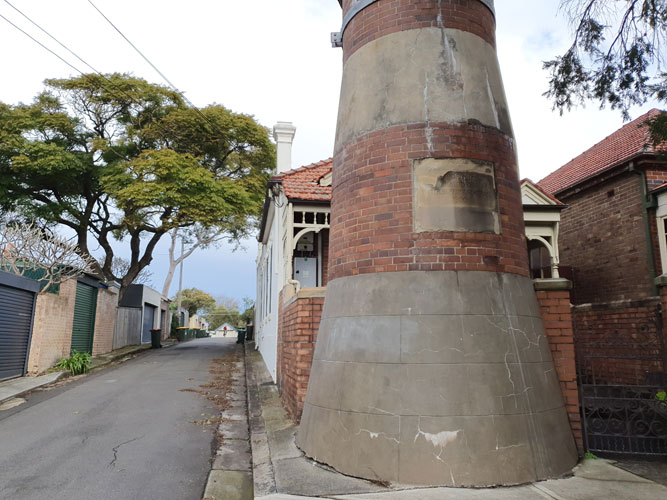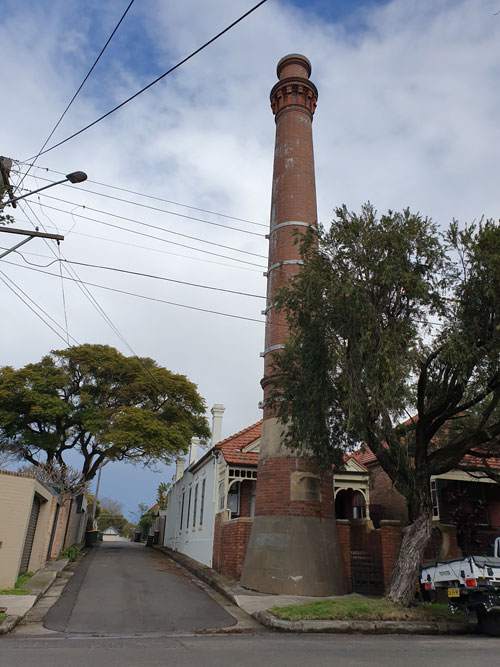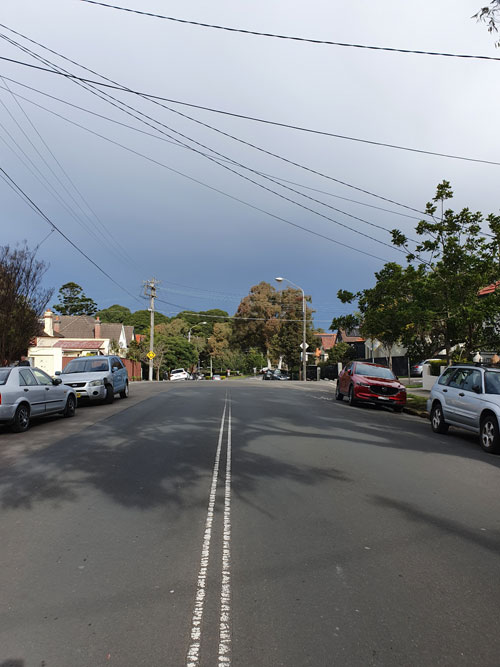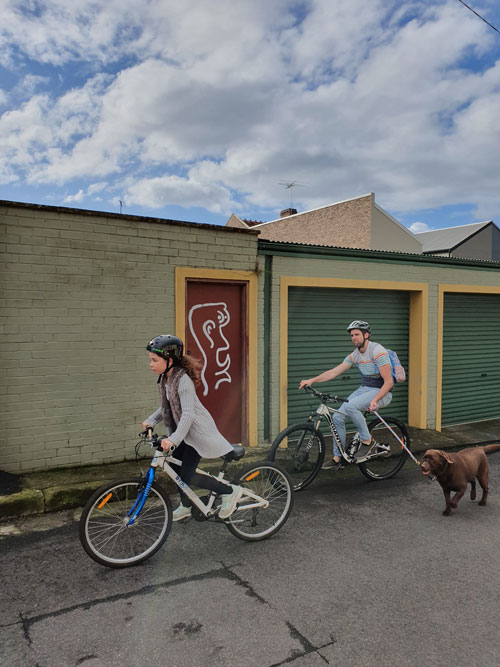Roads, footpaths and sidewalks in our towns and cities are dirty. They are surfaces where dropped food is irretrievable, where grit is picked up on shoes to be tramped indoors, where take-away wrappings blow, and where oily cars leak and spitters spit and canines shit. And because dirtiness is associated with disease the pavement, rightly or wrongly, often takes the blame for spreading infection.
Roads and footways were even dirtier before they were paved. In wet weather pedestrians used to slog their way through mud, and when it was fine carts and carriages threw up clouds of dust and pulverised horse manure.
So it is no wonder that the great British social and public health reformer of the 19th century, Sir Edwin Chadwick, was an admirer of asphalt. In his 1871 article ‘On the sanitary advantages of smooth and impermeable street surfaces’ he wrote how the new ‘asphalte’ roads in the City of London powerfully affected the cleanly habits and health of people and especially of children because they were always playing in the street. He remarked that, compared to macadam pavement, which was made from packed stones, asphalt was quiet, dried quickly, eliminated mud and dust and could be hosed clean.
Since that time hosing down seems to have become an imperative whenever ‘dirty’ pavements have been implicated in the spread of disease, especially during epidemics. Even when the actual mode of transmission of a disease is reasonably well understood, health authorities have made a show of decontaminating the streets.
This happened in 1900 when Sydney experienced a terrifying outbreak of bubonic plague mainly centred around areas close to the docks. Rats were considered to be the carriers of the contagion and householders were instructed to kill rats and prevent them from coming into their houses. They were also ordered to clean and disinfect their properties, so large amounts of rubbish were cleared out and piled in the streets ready to be carted away. The city pavements were part of this vast cleansing operation and crowds gathered to watch the streets being washed using fire hoses.
Another measure to disinfect the pavement was described poetically in a Daily Telegraph article of the time:
“Some men were put on during Thursday night to whitewash part of the streets within the quarantine boundaries. They made the footpaths like a succession of long white sheets.”
Street disinfection continues to be used as a public health measure during epidemics. In 2019 a new and fatal coronavirus disease began to spread around the world. It came to be called COVID-19. There was (and still is) no cure but it was fairly quickly established that the virus was transmitted through the air by droplets sprayed out when an infected person sneezed, coughed, or talked, and that it could also be picked up from high-touch surfaces like doorknobs and handrails where it lingered.
Nevertheless, just as in the past, the pavement was also implicated as a factor in its spread. By 2020 news services were publishing photos from many countries showing trucks or workers in protective clothing hosing down streets and plazas, or spraying them with disinfectants such as bleach. Scientists from other countries, commenting on this phenomenon, concluded that these measures were almost certainly ineffective and may even be harmful to people and the environment.
It would seem that these street cleansing activities were as much about authorities being seen to do something as they were about actually stopping the spread of COVID-19. Some commentators even added that in many countries people like to see large-scale public action by the government and that, since it had been carried out in previous emergencies, this sort of action may be embedded in a country’s culture and tradition. At such times the pavement is co-opted into a show of government effectiveness and dependability.
References
Chadwick, E. (1871) On the sanitary advantages of smooth and impermeable street surfaces. Journal of the Society of Arts, 19, pp. 789-792.
Prevention of Plague: Instructions to Householders, issued by the Department of Public Health, Sydney, 1 March 1900.
Bubonic plague. Fighting the Disease. The Quarantine Area Enlarged. Clarence and Richmond Examiner. Grafton NSW, 27 March 1900, p.8 (quotes the Daily Telegraph).
Bricknell, L. & Trott, D. (2020) Sanitising the city: does spraying the streets work against coronavirus? The Conversation, 5 May 2020.
Bhat, S. A et al. (2021) Environmental and health impacts of spraying COVID-19 disinfectants with associated challenges. Environmental Science and Pollution Research International, 29, 85648-85657.
Chung, E. (2020) Is spraying disinfectant in public spaces a good way to fight COVID-19? CBC News, 18 April 2020.
Images
1. Street flushing machine on Meagher Street Chippendale, 1928. (City of Sydney Archives)
2. Children playing on Bankside in London, 1893. (Paul Martin photographer. Daily Mail Online, 17 May 2019)
3. Crowds gather to watch the streets being washed using fire hoses in the docks area of Sydney, 1900. On one corner a barrel of whitewash can be seen.
4. In Napoleon Street, rubbish has been cleared from properties and piled on the roadway ready to be carted away. The footpaths have been whitewashed. (This and previous image are from a series of albums in the State Library of NSW containing ‘Views taken during cleansing operations, quarantine area, Sydney, 1900, under the supervision of Mr. George McCredie, F.I.A., NSW’)
5. A worker spraying the street with disinfectant in Moscow, 2020. (Maxim Shemetov/Reuters, published in Chung 2020)
6. Municipal tankers spray disinfectant as a precaution against the coronavirus in Moscow, 2020. (Andrei Nikerichev/Moscow News Agency via Associated Press, published in Chung 2020)
